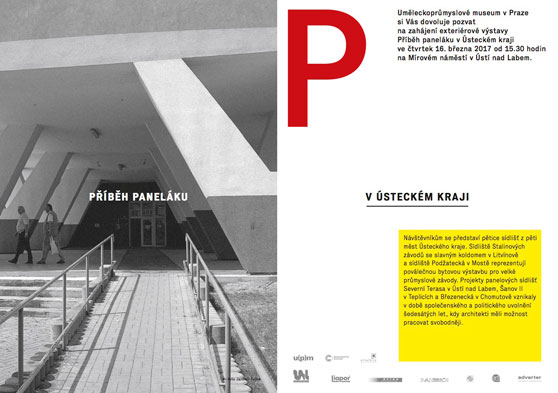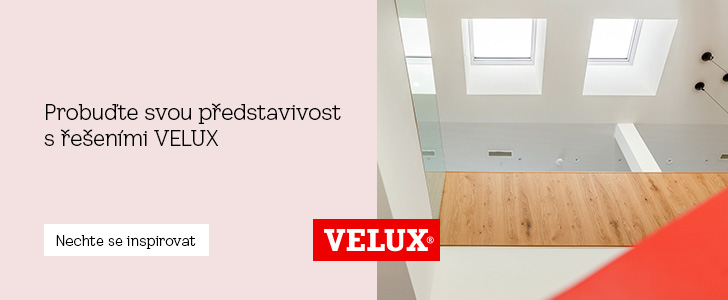
Exterior exhibition: The story of panel houses in the Ústí nad Labem region
Source
Eva Mahrezi, Uměleckoprůmyslové museum v Praze
Eva Mahrezi, Uměleckoprůmyslové museum v Praze
Publisher
Barbara Zavarská a Aleš Šedivec
14.03.2017 20:40
Barbara Zavarská a Aleš Šedivec
14.03.2017 20:40
 |
Panel Buildings in Ústí nad Labem
From March 17 to June 18, 2017, an outdoor exhibition titled "The Story of Panel Buildings in the Ústí Region" will take place in Ústí nad Labem, showcasing the history and present of selected housing estates in Litvínov (Stalin’s Factory Housing Estate), Most (Podžatecká), Ústí nad Labem (Northern Terrace), Teplice (Šanov II), and Chomutov (Březenecká). This exhibition, freely accessible to the public at Mírové náměstí, is the twelfth display in a traveling series dedicated to selected housing estates in various regions of the Czech Republic.
“We would like to show that not all estates are the same, that they do not have to be monotonous clusters of boxes designed by an anonymous team in a design institute,” explains the main author of the project, Lucie Skřivánková (Zadražilová) from the Museum of Decorative Arts in Prague. “Panel housing estates have their past, present, and in many cases, developmental potential, and for their residents, they represent home. Therefore, it would be a mistake to turn a blind eye to the uniqueness of many of them and be influenced by one-sided judgments,” she adds.
According to data from the last Census (2011), 321,265 (41%) of the total 784,437 inhabitants of the Ústí Region live in apartments with panel walls. These “panel households” represent about 44% of all households. Panel buildings account for 8% of the total occupied housing stock in the region.
The outdoor exhibition introduces visitors to five housing estates from five cities. The estates in Litvínov and Most represent post-war housing construction for large industrial plants. The designs for the panel housing estates in Ústí nad Labem, Teplice, and Chomutov were created during the social and political relaxation of the 1960s, when architects were able to work more freely.
The Litvínov Housing Estate of Stalin's Factories was designed after World War II by representatives of the interwar avant-garde for employees of the eponymous chemical plant. Besides two-story brick buildings and row houses, it also includes the famous Koldům by Evžen Linhart and Václav Hilský, registered in the Central List of Cultural Monuments of the Czech Republic.
Just slightly younger, the mining housing estate Podžatecká in Most was initially conceived as a separate residential unit connecting to the historic center of the city. The so-called "Stovky", four brick five-story apartment buildings in the shape of the letter E with courtyards opening into the estate and with shops and passages directed towards the city street, bear the influence of socialist realism.
In 1962, a nationwide competition for the urban design of the new residential unit Northern Terrace for more than twenty thousand residents was held in Ústí nad Labem. The winning design offered an ingenious concept – with a relatively small number of building types, it succeeded in creating diverse internal residential spaces and intricately linking the new ensemble with the urban structure.
For the design of the Teplice housing estate Šanov II, architect Miroslav Masák won first prize in the competition organized by the Union of Architects of the ČSSR in 1963. Its uniqueness lies not only in the generous urban conception of the whole but also in the successful realizations of civic amenities.
The youngest in our selection is the Březenecká housing estate in Chomutov, featuring three experimental eighteen-story buildings designed by architect Rudolf Bergr at the end of the 1960s. He drew inspiration from Le Corbusier’s Unité d’habitation in Marseille, both conceptually and formally, as well as technologically.
Many highly skilled architects contributed to the realization of these housing estates, creatively developing the ideas of interwar avant-garde architects and urban planners. The exhibition also addresses issues of urban planning, apartment layouts, artistic decoration of housing estates, and construction technologies. It does not overlook the question of the age, educational, and professional structure of the local inhabitants and how it has changed since the time of construction. “We illustrate with examples what is happening today with selected panel housing estates, whether regeneration interventions have contributed to improving the residential environment or, conversely, disrupted the genius loci of these units,” adds Lucie Skřivánková.
The grant project "Panel Housing Estates in the Czech Republic as Part of the Urban Environment: Assessment and Presentation of Their Residential Potential" is a five-year research and exhibition project involving nearly twenty architectural historians, urban planners, preservationists, demographers, and other experts from museum and academic institutions. The academic guarantor is art historian Professor Rostislav Švácha, and the project is institutionally backed by the Museum of Decorative Arts in Prague. The Ministry of Culture of the Czech Republic supports the project as part of the grant program for research and development of national cultural identity (NAKI).
In addition to a comprehensive Czech-English monograph on the issues of housing estates and individual specialized texts and publications, the main output of the project is a series of thirteen exhibitions in various regional cities, culminating in a collective exhibition in Prague in 2017. The exhibition cycle is intended for interested parties from both professional and lay audiences. The exposition, designed by the architectural studio A1 Architects (Tereza Schneiderová, Lenka Křemenová, David Maštálka), takes the form of a stylized panel town. Six freestanding elements made of lightweight concrete were custom-made for the project by the company LIAS Vintířov. The graphic solution was created by Štěpán Malovec.
Panel housing estates represent an important urban, architectural, and historical phenomenon. Although they were the most typical and widespread form of mass housing construction from the 1950s to the 1980s, and today nearly three million inhabitants of the Czech Republic live in these estates, research into their significance and socio-cultural role is still in its infancy. After years of one-sided criticism and rejection, we are now witnessing a growing interest in the topic of panel housing estates not only among experts but also among contemporary artists.
Date: March 17 – June 18, 2017
Address: Mírové náměstí, Ústí nad Labem
Organizer of the exhibition: Museum of Decorative Arts in Prague
More information HERE and HERE
The English translation is powered by AI tool. Switch to Czech to view the original text source.
Related articles
0
02.10.2017 | Exterior exhibition: The story of panel houses in the Prague region
0
18.06.2017 | Exterior Exhibition: The Story of Panel Houses in the Liberec Region
0
16.03.2017 | The exhibition in Ústí showcases the architecture of the North Bohemian housing estates
0
10.01.2017 | Exterior exhibition: The story of the panel house in the Karlovy Vary Region
0
23.11.2016 | Exterior Exhibition: The Story of the Prefabricated Building in the Plzeň Region
0
01.04.2016 | Exterior exhibition: The Story of Panel Buildings in the Vysočina Region
0
06.01.2016 | Exterior exhibition: The Story of Prefabricated Housing in the South Moravian Region
0
11.10.2015 | Exterior exhibition: The story of prefabricated buildings in the Moravian-Silesian Region
0
24.04.2015 | Exterior exhibition: The story of the panel house in the Olomouc region
0
22.01.2015 | Outdoor Exhibition: The Story of the Panel House in the Pardubice Region











